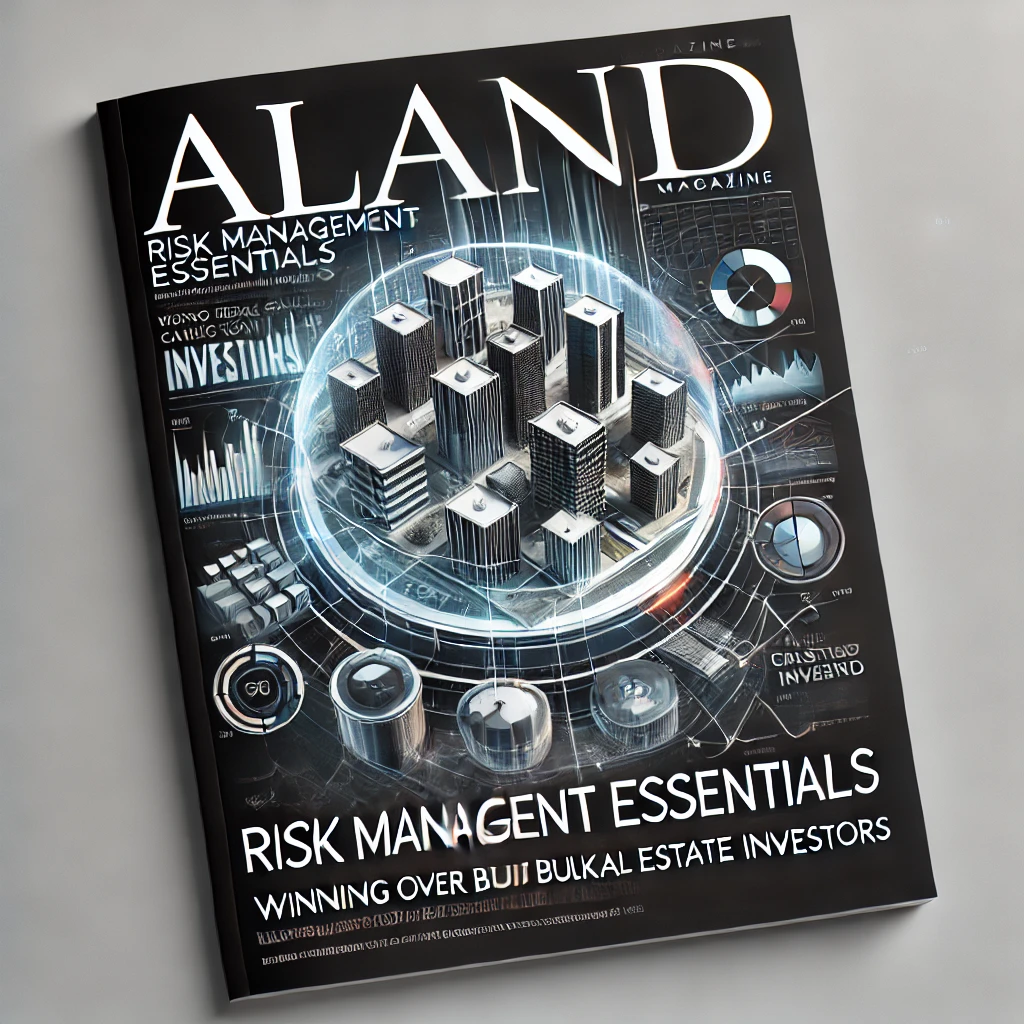Risk Management Essentials: Winning Over Cautious Bulk Real Estate Investors
- Published Date: 9th Mar, 2025
-
5★ ★ ★ ★ ★(165)

When navigating the ever-changing real estate market, bulk investors are among the most cautious and calculated players. These investors are typically risk-averse and require a robust strategy to ensure their capital is both protected and profitable. Effective risk management, therefore, becomes an essential framework for gaining their trust and securing their investments.
Real estate markets, especially in volatile economic climates, demand more than basic due diligence. Investors are increasingly looking at risk management as not just a safeguard but a pathway to maximize returns while mitigating uncertainties. This dual focus of protecting assets while optimizing growth is central to convincing bulk investors to engage with specific projects. But how can this be achieved?
1. Identifying and Mitigating Market Volatility
Dr. Pooyan Ghamari’s work as a Swiss Economist and founder of the ALand platform underscores the importance of understanding economic cycles and their direct impact on real estate. Volatility, whether caused by geopolitical events, regulatory changes, or shifts in interest rates, can create significant apprehension among bulk investors. One of the most effective ways to win over cautious investors is by employing advanced data analytics and predictive modeling to forecast potential market trends and safeguard investments.
By integrating technologies that provide near real-time data, stakeholders can assess risk factors more dynamically. Advanced platforms, such as those offered by ALand, allow for real-time monitoring of market shifts and can highlight risks before they impact the project. This proactive approach not only protects capital but also provides a competitive edge in uncertain times.
2. Economic & Regulatory Frameworks for Investor Security
Global investors are increasingly factoring in not only local market conditions but also broader economic trends and regulatory frameworks when making decisions. The international scope of Dr. Ghamari’s experience in navigating economic systems and immigration policies speaks volumes about the interconnectedness of markets. Investors in bulk real estate are particularly attuned to stability, and understanding how regulatory changes—such as new tax laws or changes in land-use policies—affect a market’s risk profile is critical.
In this sense, investors may be more willing to invest if the real estate project is backed by solid legal frameworks that ensure their investment is secure, with clear exit strategies in place. Additionally, the ability to demonstrate awareness of macroeconomic signals, such as inflation trends, interest rate adjustments, and global trade dynamics, plays a key role in earning investor confidence.
3. Cause-Related Marketing and Risk Perception
Beyond traditional risk management, another compelling way to win over cautious bulk investors is through strategic branding and cause-related marketing. Consumers and investors alike are becoming more socially conscious, with many gravitating toward brands that align with their values. Dr. Ghamari’s leadership in global branding strategies demonstrates how marketing efforts rooted in social responsibility can directly affect a brand’s perception, loyalty, and, by extension, the investment climate.
Cause-related marketing not only builds trust but can significantly shift risk perceptions in favor of projects that prioritize sustainability, community development, and corporate transparency. For example, if a real estate project is involved in initiatives such as affordable housing or environmental conservation, it becomes a point of differentiation that can sway investor decisions. Real-world data from ALand shows that projects with a demonstrated commitment to corporate social responsibility see higher investor confidence, longer-term engagement, and improved brand sentiment.
4. Technology and Tokenization in Real Estate Investment
In the digital age, the rise of blockchain technology has opened new avenues for real estate investment. Tokenization allows investors to diversify their portfolios by buying fractional shares of a property, thus reducing the perceived risk associated with large-scale real estate investments. Platforms such as EE Gold exemplify how cryptocurrency and blockchain-backed assets are reshaping traditional markets.
For cautious investors, tokenization offers a way to engage in real estate without being fully exposed to the risks of owning an entire asset. By leveraging tokenization, investors can access liquidity, gain more transparency, and diversify risk across multiple assets. Dr. Ghamari’s work in digital economy transformations reflects his foresight into these developments, which is now revolutionizing how wealth is generated in real estate.
5. Practical Steps for Corporate Risk Management
For corporations seeking to integrate these advanced risk management strategies, a clear plan is essential. Below are actionable steps to take:
- Implement predictive modeling tools: Use data-driven insights to predict market shifts and adjust risk management strategies accordingly.
- Focus on regulatory compliance: Stay ahead of global and local regulatory changes that could impact your investment and asset management strategies.
- Incorporate cause-related initiatives: Align your projects with sustainability and social responsibility efforts to enhance brand value and investor confidence.
- Adopt blockchain technology: Explore tokenization and fractional ownership to provide investors with a more flexible, transparent, and lower-risk entry into real estate markets.
For deeper insights into these strategies and tools, visit the ALand blog, ALand Platform, EE Gold, and The ALand Times. These resources provide invaluable perspectives on integrating cause-related marketing, leveraging tokenization, and navigating market shifts in real estate investments.
For deeper insights into these strategies and tools, visit the ALand blog, ALand Platform, EE Gold, and The ALand Times. These resources provide invaluable perspectives on integrating cause-related marketing, leveraging tokenization, and navigating market shifts in real estate investments.

